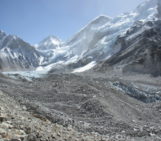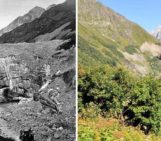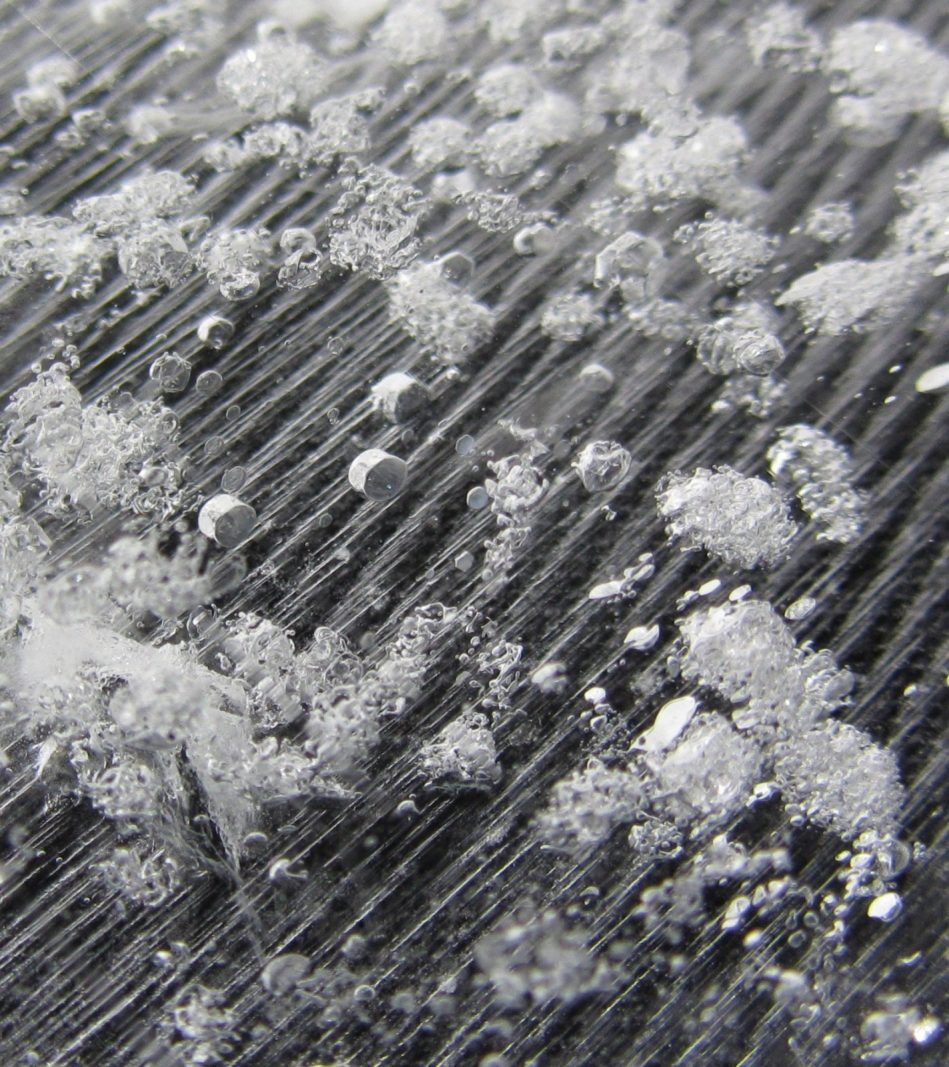
On the plateau of Kilimanjaro, Tanzania, the remnants of a glacier can be found and the ice from that glacier contains a rather interesting feature – Broccoli! Not the vegetable, but bubbles that look a lot like it. Our Image of the Week shows some of these strange “Broccoli Bubbles”. Read on to find out more about where these were found and how we can see them.
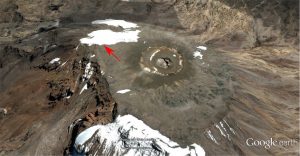
Figure 2: Kilimanjaro northern ice field, Tanzania, 5800 m a.s.l. Red arrow indicates where ice samples were collected [Credit: Adapted from a Google Earth image]
There is not much ice left on the mountain plateau of Kilimanjaro (Fig. 2), the highest mountain in Africa (5895 m a.s.l.), which is also a dormant volcano. Very likely the last remnants of glacier ice will have gone soon (Thompson et al., 2009). However, a recent expedition to Kilimanjaro’s Northern Ice Field in 2015 (Bohleber et al., 2017) brought home some ice block samples cut with a chain saw from the accessible southern ice cliff 5800 m a.s.l. (red arrow, Fig. 2) . These block were then studied in ice laboratory at AWI in Germany and an interesting observation was made…Broccoli bubbles!
These irregularly shaped bubbles, which look like broccoli, were seen in the polished ice slabs using close-up photography and an LASM (Large Area Scan Macroscope). This type of bubble intrigued scientists as it is certainly not a common one! When looking from above onto a horizontal section the broccoli bubbles appear to have pointy tips (Fig. 3.), which are all directed towards the glacier face.
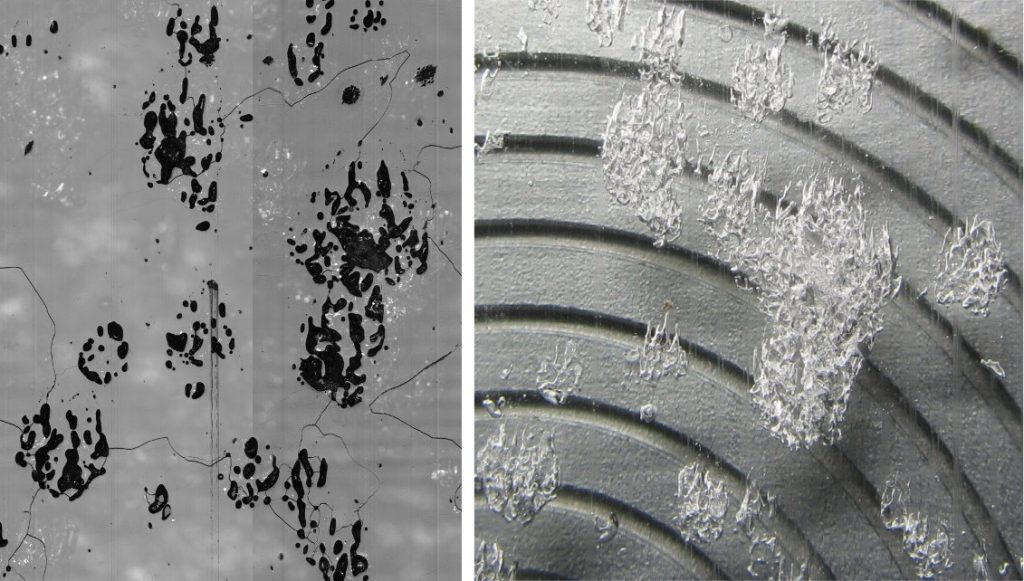
Figure 3: “Broccoli” bubbles seen from above. RHS: A horizontal section of ice, area in image is approx. 2 cm high, image is a close-up photograph with a metal plate in the background. The pointed tips of the bubbles (up in this photo) are directed towards the ice cliff face (from which the samples were taken). LHS: Large Area Scan Macroscope (LASM) cross-section through the sample (LHS). The black pore spaces are the Broccoli bubbles [Credit: Johanna Kerch].
Another type of bubble makes also an appearance: the disk- or bowl-shaped bubble (Fig. 1). It is rather regular but not rounded. Instead it is flattened on one or both sides and a little angular, maybe even leaning towards a hexagonal shape. Disk bubbles found close together are oriented in the same direction, one explanation for this could be that the crystal orientation of the ice (the way the ice crystal align during ice flow) plays a role in the bubble formation.
How do the broccoli and disk bubbles evolve? Although we suspect it has something to do with the temperate ice and some temperature gradient at the ice cliff, we do not know for certain. Nonetheless, it is a marvellous thing to discover – before the Kilimanjaro glacier ice is gone for good!
Edited by Emma Smith
 Johanna Kerch is a postdoctoral researcher at Alfred-Wegener-Institute in Bremerhaven. Her research focus is on crystal-preferred orientation and microstructure of glacier ice and how it links to other physical properties in ice and the deformation mechanisms in glacier ice. She has studied cold and temperate glacier ice from various sites in the Alps and has recently been involved in making measurements of the physical properties of the EGRIP ice core. She tweets as @JohannaKerch.
Johanna Kerch is a postdoctoral researcher at Alfred-Wegener-Institute in Bremerhaven. Her research focus is on crystal-preferred orientation and microstructure of glacier ice and how it links to other physical properties in ice and the deformation mechanisms in glacier ice. She has studied cold and temperate glacier ice from various sites in the Alps and has recently been involved in making measurements of the physical properties of the EGRIP ice core. She tweets as @JohannaKerch.

